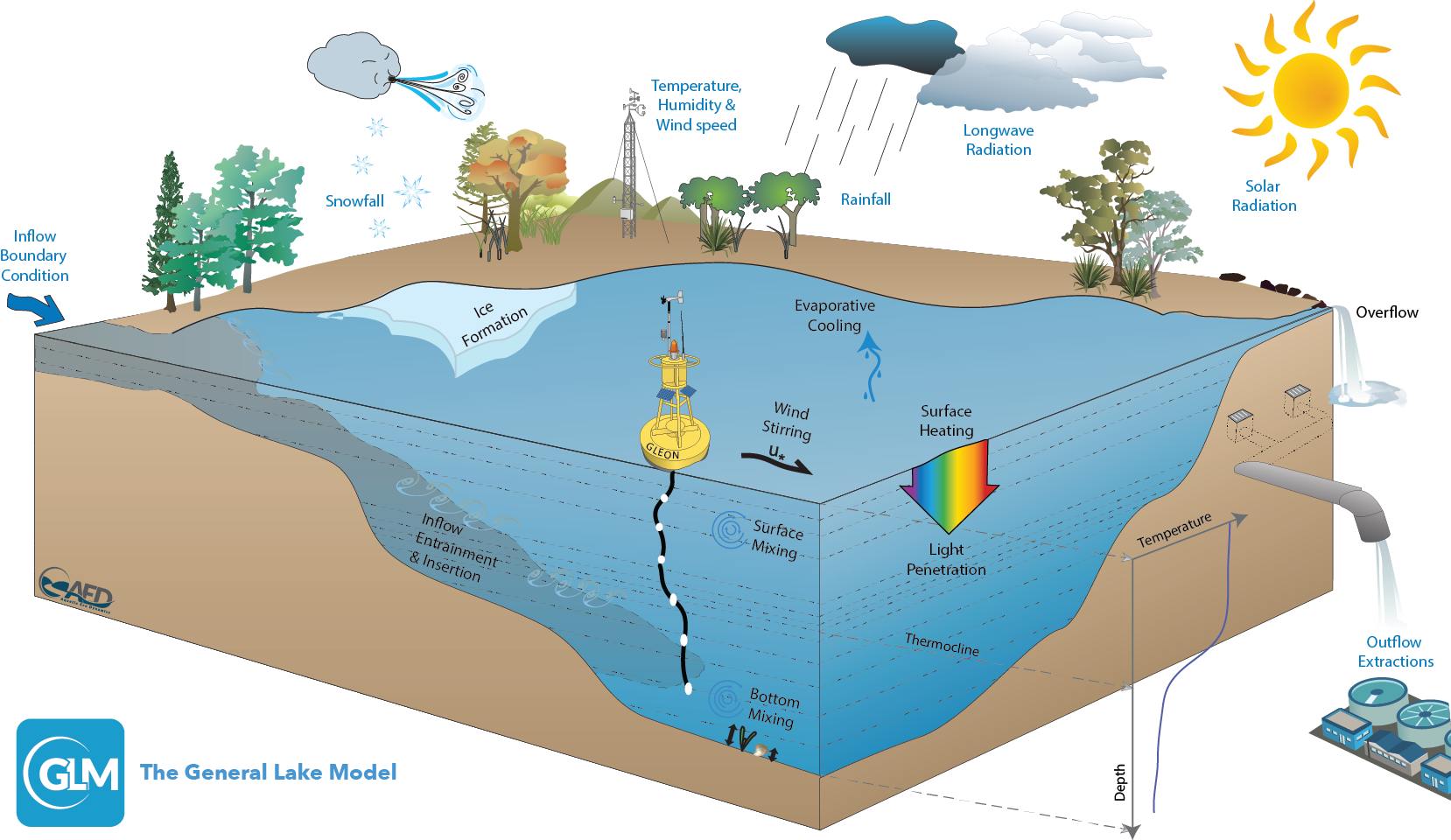-
Notifications
You must be signed in to change notification settings - Fork 9
Introduction
This site summarises the 1D lake water balance and vertical stratification model: “The General Lake Model” (GLM). GLM (not to be confused with General Linear Model) has been designed to be an open-source community model suited to environmental modelling studies where simulation of lakes or reservoirs is required.
The model has been developed as an initiative of the Global Lake Ecological Observatory Network (GLEON) and in collaboration with the Aquatic Ecosystem Modelling Network (AEMON) that started in 2010. The model was first introduced in Leipzig at the 2nd Lake Ecosystem Modelling Symposium in 2012, and has since developed with application to numerous lakes within the GLEON network and beyond.
The model couples with the AED water quality and ecosystem modelling library for integrated simulations of lake and reservoir water quality and ecosystem health.
GLM computes vertical profiles of temperature, salinity and density by accounting for the effect of inflows/outflows, mixing and surface heating and cooling, including the effect of ice cover on heating and mixing of the lake. Since the model is one-dimensional it assumes no horizontal variability so users must ensure the lake conditions match this one-dimensional assumption. The model is ideally suited to long-term investigations ranging from seasons to decades, and for coupling with biogeochemical models to explore the role that stratification and vertical mixing play on the dynamics of lake ecosystem.
GLM incorporates a flexible Lagrangian layer structure similar to the approach of several 1-D lake model designs (Imberger and Patterson 1981; Hamilton and Schladow 1997). The Lagrangian approach was originally introduced in the model DYRESM developed by the Centre for Water Research and allows for layers to change thickness by contracting and expanding in response to inflows, outflows, mixing and surface mass fluxes. When sufficient energy becomes available to over come density gradients, two layers will merge thus accounting for the process of mixing. Layer thicknesses are adjusted by the model in order to sufficiently resolve the vertical density gradient. Unlike the fixed grid design where mixing algorithms are typically based on vertical velocities, numerical diffusion of the thermocline is limited, making the GLM approach particularly suited to long-term investigations.
Although GLM is a relatively new light-weight model code, many of the heating and mixing algorithms have been based on equations presented by Hamilton and Schladow (1997) and many earlier studies. GLM has been written with a modernised code structure and features a number of customisations to make the model easy and efficient to use. The model integrates with various workflows for model setup, operation and assessment, including with tools in R for plotting and calibration, or with PEST for advanced model calibration.
For details of the model, refer to the open-access GLM GMD paper, and the many other papers and reports listed on the publications page.
Happy modelling!
























Background
Getting started
- Downloading
- Running the model
glm.nmlconfiguration file- Tutorials & examples
- Navigating GLM outputs
Advanced use
- Command line options
- Restarting a simulation
- Customising the WQ setup
- Adding a new example lake
- Using GLM in R
Developer guide
- Downloading the code
- Compiling the code
- Updating existing submodule state
- Adding new submodules
- Using GLM as a linked library
